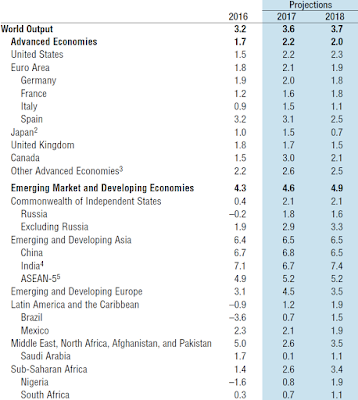Over the last few weeks, we’ve talked quite
a bit about the values each of us should possess if we want to build a Namibian
House. One “where everyone feels a sense of belonging, where everyone is
presented with a fair opportunity to prosper in an inclusive manner and by so
doing, ensure that no one feels left out.” We, as a people, need to be honest,
loyal, kind, jovial and generous, whilst uniting in the bonds of friendship.
But what does our government need to do? For a start, it needs to lift all
Namibians into prosperity based on an inclusive Namibian House, united in its
cause.
There are, of course, several policies one
can implement to alleviate poverty, but none of them work without economic
growth. It is often said that economic growth will alleviate poverty, but this
is not strictly true for economic growth alone – it will only alleviate poverty
if the lowest wages rise faster than the average wage, and if benefits and
pensions are kept in line with average wage increases. Economic growth,
however, creates new job opportunities, and that is how poverty gets
alleviated. It is quite well known that the biggest cause of poverty is in fact
unemployment!
Government has had some success in this,
but it appears to have followed the time tested method of trial and error –
repeated, varied attempts which are continued until you find success.
Unfortunately, it appears government is only measuring the end result to see
what is effective – and as a result, may be missing the intermediary measures
one can examine to see if policies may not be able to improve those.
This seems like a job for our
Statistician-General, but until such time, we can also look to international
studies – such as the Doing Business Report of the World Bank Group. In its
2018 report, however, the results did not look good. Out of 190 countries,
Namibia came 106st on its ease of doing business, dropping 5 places
in two years.
In particular, there are several
sub-sections where Namibia should mightily improve if we want to build an
inclusive Namibian House. In terms of tackling unemployment, perhaps the most
important of these would be the ease with which one can start a new business.
Namibia ranked 172nd out of 190 countries – we’ve dropped 8 places
in just two years.
To start a new business, there are 10
procedures that need to be followed, which takes 66 days. Compare that to New
Zealand, the best, where there is only a single procedure that needs to be
followed, and it takes but half a day to register a business. Would it not be
better for Namibia’s unemployment if this wall were not in front of every
entrepreneur that wished to enter the economy? To simply pay a company’s taxes
requires 27 payments a year, and requires 302 hours of work to complete. While
this only makes us 79th in the world, that still means a new
entrepreneur needs to work almost two months of a year just on his taxes. This
is time not spent building his business!
Registering a property takes 8 procedures,
and 52 days – placing us 175th out of 190 countries. It also on
average costs 13.8% of the property’s value. With the world leaders having only
a single property procedure taking a single day, and with it costing zero in
Saudi Arabia, is it any wonder we’re complaining about land provision when it
takes this long and costs so much simply to register it? Perhaps the problem
with land is the cost of acquisition…
For trading across borders, I came across
an even more startling statistic, which could explain why the Bank of Namibia
is constantly warning our citizens that our imports exceed our exports. In
order to export from Namibia, it requires 15 working days to ensure border
compliance, or two working weeks. It requires an additional 11 working days to
ensure the documentation is completed for that export, with the costs to ensure
compliance amounting to almost US$1100. Now compare that to the 6 hours
required to ensure goods are compliant to import, with only 3 hours required
for import documentation, costing less than US$210.
And to enforce a contract here in Namibia,
it takes 460 days to be heard by the court (only 120 days in Singapore), while
it would cost 35.8% of the claim (0.1% in Bhutan), although our court system
did get credit for the reform process case management and information
communication technology systems. There are several more statistics that relate
to the ease of doing business that increase our score compared to these, like
Getting Credit (68th), Getting Electricity (68th), Dealing
with construction permits (107th) and Protecting Minority Investors
(89th).
If we as a nation wish to alleviate poverty
and unemployment, it seems clear where we should start. I know that we as a
nation want to do all that we can. We want to make a contribution – we want to
be a part of the plan. Our destiny seems uncertain, and that can be hard to
take, but our path will become much clearer with every new choice we make.
Patience is never easy; we can all understand wanting more. But we also know
how hard it is to wait, as a nation, to spread out our wings and soar.
But we are here for a reason – as a nation,
we are gifted, and we are strong. We know we belong here, and we’ll solve our
problems. Our time is coming soon – as the sun rises, so does the moon, and as
love finds a place in every heart, we are a nation. We’ll play our part.


